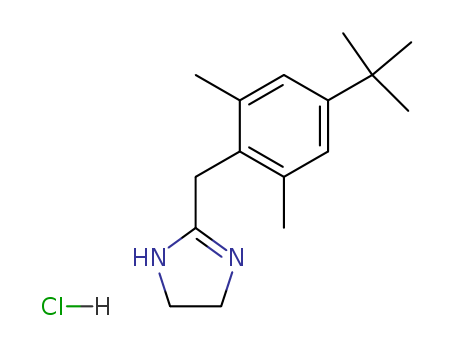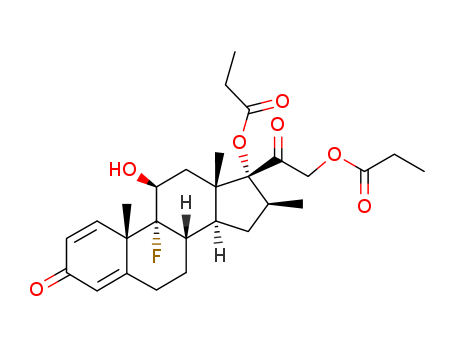Product Details;
CasNo: 7440-25-7
Molecular Formula: Ta
Appearance: wire
Perfect Factory Offer Excellent quality Tantalum 7440-25-7 with Safe Shipping
- Molecular Formula:Ta
- Molecular Weight:180.9479
- Appearance/Colour:wire
- Vapor Pressure:<0.01 mm Hg ( 537.2 °C)
- Melting Point:2996 ºC(lit.)
- Boiling Point:5425 ºC(lit.)
- PSA:0.00000
- Density:16,6 g/cm3
- LogP:0.00000
Tantalum(Cas 7440-25-7) Usage
|
History |
Tantalum was discovered by the Swedish chemist Anders Ekeberg in 1802, although for a long time after his discovery many chemists believed tantalum and niobium were the same element. In 1866, Marignac developed a fractional crystallization method for separation of tantalum from niobium. Ekeberg named the element in honor of Tantalus, who was Niobe’s father in Greek mythology. Tantalum is never found in nature in free elemental form. The most important mineral is columbite-tantalite (Fe,Mn) (Nb,Ta)2O6. Tantalum also is found in minor quantities in minerals pyrochlore, samarskite, euexenite, and fergusonite. The abundance of tantalum in the earth’s crust is estimated as 2 mg/kg. Tantalum and its alloys have high melting points, high strength and ductility and show excellent resistance to chemical attack. Tantalum carbide graphite composite is one of the hardest substances ever made and has a melting point over 6,700°C. The pure metal is ductile and can be drawn into fine wire, which is used as filament for evaporating aluminum and other metals. |
|
Reactions |
The most common oxidation state of tantalum is +5 and its aqueous solution chemistry is that of its pentavalent ion Ta5+. Ta metal forms a pentavalent oxide, tantalum pentoxide, Ta2O5, on heating with oxygen. However, at ordinary temperatures a thin layer of oxide covering the metal surface protects tantalum from most chemical attacks. The metal is attacked by hydrofluoric acid below 150°C. It also is dissolved by hot fuming sulfuric acid. It reacts with fluorine and chlorine on heating, forming tantalum pentafluoride, TaF5, and pentachloride, TaCl5, respectively. The metal is immune to dilute aqueous alkalies but is attacked slowly by concentrated fused alkalies. It combines with molecular hydrogen above 250°C. The hydride formed decomposes on heating above 800°C in vacuum. Tantalum forms alloys with several metals. |
|
Isotopes |
There are 49 isotopes of tantalum. Only the isotope Ta-181 is stable andaccounts for 99.988% of the total mass of the element on Earth. Just 0.012% of the element’s mass is contributed by Ta-180, which has a half-life of 1.2×10+15 years and isthus considered naturally stable. The remaining 47 isotopes are all artificially producedin nuclear reactions or particle accelerators and have half-lives ranging from a few microsecondsto few days to about two years. |
|
Origin of Name |
Tantalum was named after Tantalus, who was the father of Niobe, the queen of Thebes, a city in Greek mythology. (Note: The element tantalum was originally confused with the element nobelium.) |
|
Characteristics |
Tantalum is almost as chemically inert at room temperatures (it has the ability to resistchemical attacks, including hydrofluoric acid) as are platinum and gold. It is often substitutedfor the more expensive metal platinum, and its inertness makes it suitable for constructingdental and surgical instruments and artificial joints in the human body. |
|
Production Methods |
The first successful industrial process used to extract tantalum and niobium from the tantalite-columbite-containing minerals employed alkali fusion to decompose the ore, acid treatment to remove most of the impurities, and the historic Marignac fractional-crystallization method to separate the tantalum from the niobium and to purify the resulting K2TaF7. Most tantalum production now employs recovery of the tantalum and niobium values by dissolution of the ore or ore concentrate in hydrofluoric acid. Then the dissolved tantalum and niobium values are selectively stripped from the appropriately acidified aqueous solution and separated from each other in a liquid-liquid extraction process using methyl isobutyl ketone (MIBK) or other suitable organic solvent. The resulting purified tantalum-bearing solution is generally treated with potassium fluoride or hydroxide to recover the tantalum in the form of potassium tantalum fluoride, K2TaF7, or with ammonium hydroxide to precipitate tantalum hydroxide, which is subsequently calcined to obtain tantalum pentoxide, Ta2O5. Tantalum metal is generally obtained by sodium reduction of K2TaF7, although electrolysis of K2TaF7 and carbon reduction of Ta2O5 in an electric furnace have also been used. Tantalum metal can absorb large volumes of hydrogen during heating in a hydrogenbearing atmosphere at an intermediate temperature range (450–700 °C (842-1,292 °F)). The hydrogen is readily removed by heating in vacuum at higher temperatures. |
|
Hazard |
Dust or powder may be flammable. Toxic by inhalation. |
|
Health Hazard |
Tantalum has a low order of toxicity but has produced transient inflammatory lesions in the lungs of animals. Surgical implantation of tantalum metal products such as plates and screws has not shown any adverse tissue reaction, thus demonstrating its physiological inertness. |
|
Flammability and Explosibility |
Flammable |
|
Safety Profile |
An inhalation hazard. Some industrial skin injuries from tantalum have been reported. Systemic industrial poisoning, however, is apparently unknown. Questionable carcinogen with experimental tumorigenic data. The dry powder iptes spontaneously in air. Incompatible with bromine trifluoride, fluorine, lead chromate. See also specific tantalum compounds. |
|
Carcinogenicity |
Although Oppenheimer et al., using embedded metal foil technique, have elicited two malignant ?brosarcomas in 50 embeddings of tantalum metal in 25Wistar rats aftera latent period of714days, these results remain a controversial issue. Miller et al. have studied tumorigenic transforming potential of tungsten, iron, nickel, and cobalt with tantalum as a comparison on an immortalized nontumorigenic human osteoblast-like cell line. No tumorigenic activity of Ta was reported, but data are not shown. In the recent study, intramuscularly pellets (1mm 2mm cylinders) of weapons-grade WA were implantedtosimulateshrapnelwounds.Ratswereimplanted with 4 (low dose) or 20 pellets (high dose) of WA. Tantalum (20 pellets) and nickel (20 pellets) served as negative and positive controls, respectively. Rats implanted with tantalum (n=46) did not develop tumors. |
|
Shipping |
UN3089 Metal powders, flammable, n.o.s., Hazard Class: 4.1; Labels: 4.1-Flammable solid. |
|
Incompatibilities |
A flammable solid; the dry powder can ignite spontaneously in air. Incompatible with lead chromate. A strong reducing agent; incompatible with oxidizers (chlorates, nitrates, peroxides, permanganates, perchlorates, chlorine, bromine, bromine trifluoride, fluorine, etc.); contact may cause fires or explosions. Keep away from alkaline materials, strong bases, strong acids, oxoacids, epoxides. Tantalum metal is attacked by hydrogen fluoride, fused alkalis, fuming sulfuric acid. |
|
Waste Disposal |
Sanitary landfill if necessary; recover if possible because of economic value. Technology exists for tantalum recovery from spent catalysts, for example. |
|
Physical properties |
Tantalum has properties similar to niobium and vanadium above it in group 5. It is a veryhard and heavy metal with a bluish color when in its rough state, but if polished, it has a silveryshine. It is ductile, meaning it can be drawn into fine wires, and also malleable, meaningit can be hammered and worked into shapes. Thin strips and wires of tantalum will ignite inair if exposed to a flame.Tantalum’s melting point is 2,996°C, which is almost as high as tungsten and rhenium. Itboiling point is 5,425°C, and its density is 19.3 g/cm3. |
|
Definition |
A silvery transition element. It is strong, highly resistant to corrosion, and is easily worked. Tantalum is used in turbine blades and cutting tools and in surgical and dental work. Symbol: Ta; m.p. 2996°C; b.p. 5425 ± 100°C; r.d. 16.654 (20°C); p.n. 73; r.a.m. 180.9479. |
|
General Description |
Tantalum dust is a black odorless powder. Mp: 2996°C; bp: approx. 5250°C. Density: 16.65 g cm-3. Insoluble in water. Tantalum oxide dust is a white, microcrystalline powder Mp: 1800°C. Density: 7.6 g cm-3. Insoluble in water. The mixture is listed as a toxic inhalation hazard by OHSA. |
InChI:InChI=1/Ta
Relevant Products
-
Copper gallium telluride (CuGaTe2)
CAS:12018-84-7
-
Xylometazoline hydrochloride
CAS:1218-35-5
-
Betamethasone Dipropionate
CAS:5593-20-4








